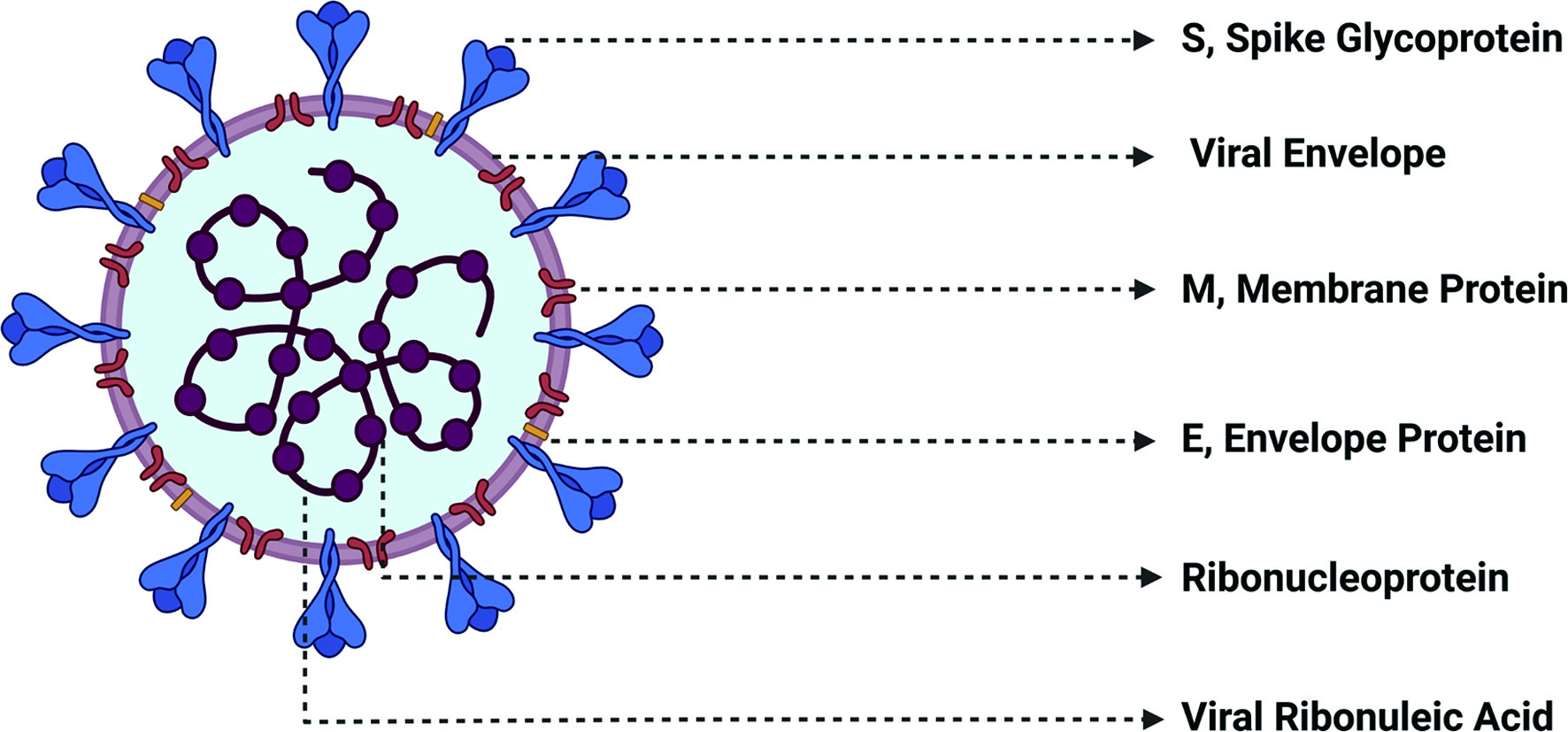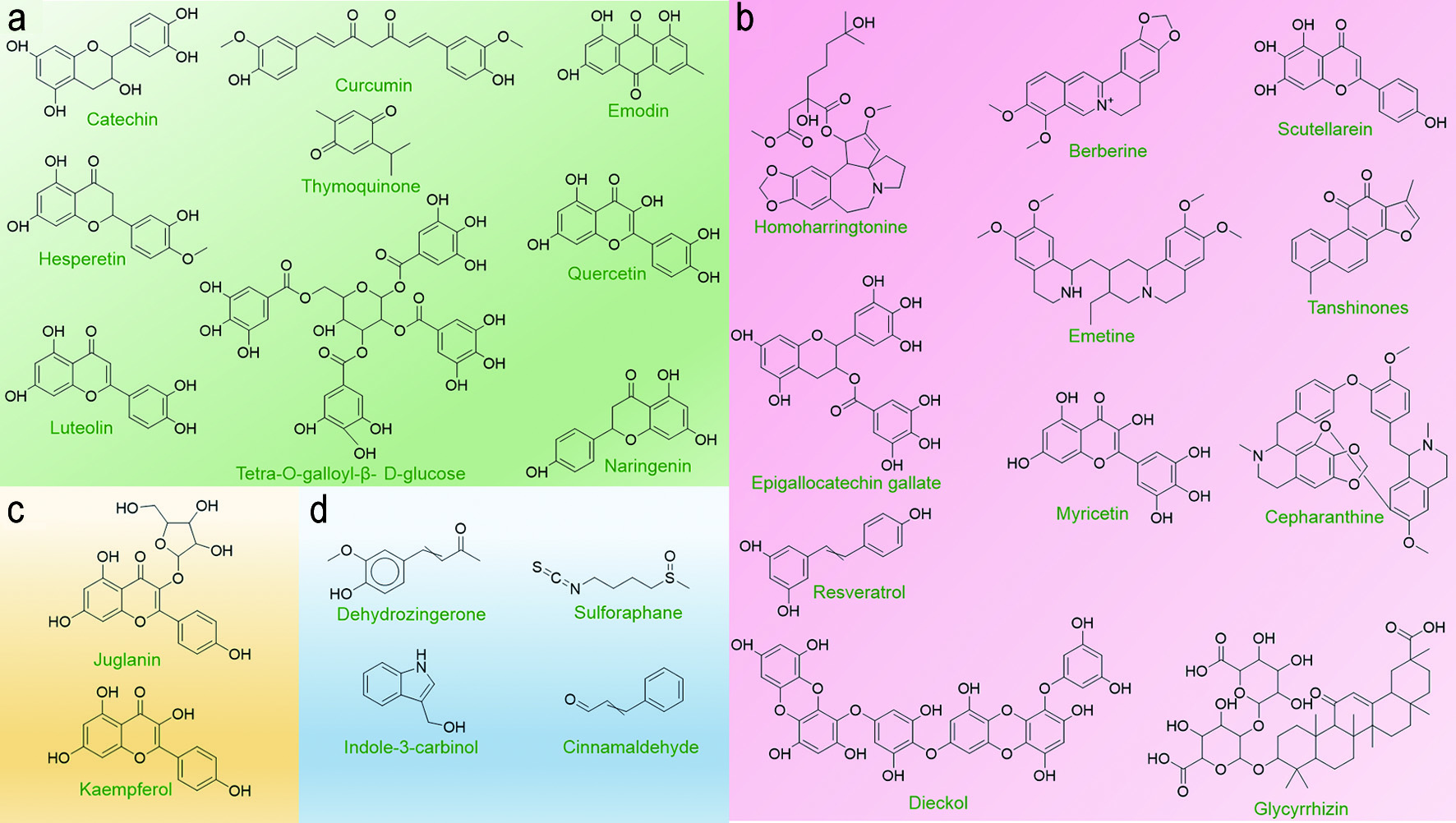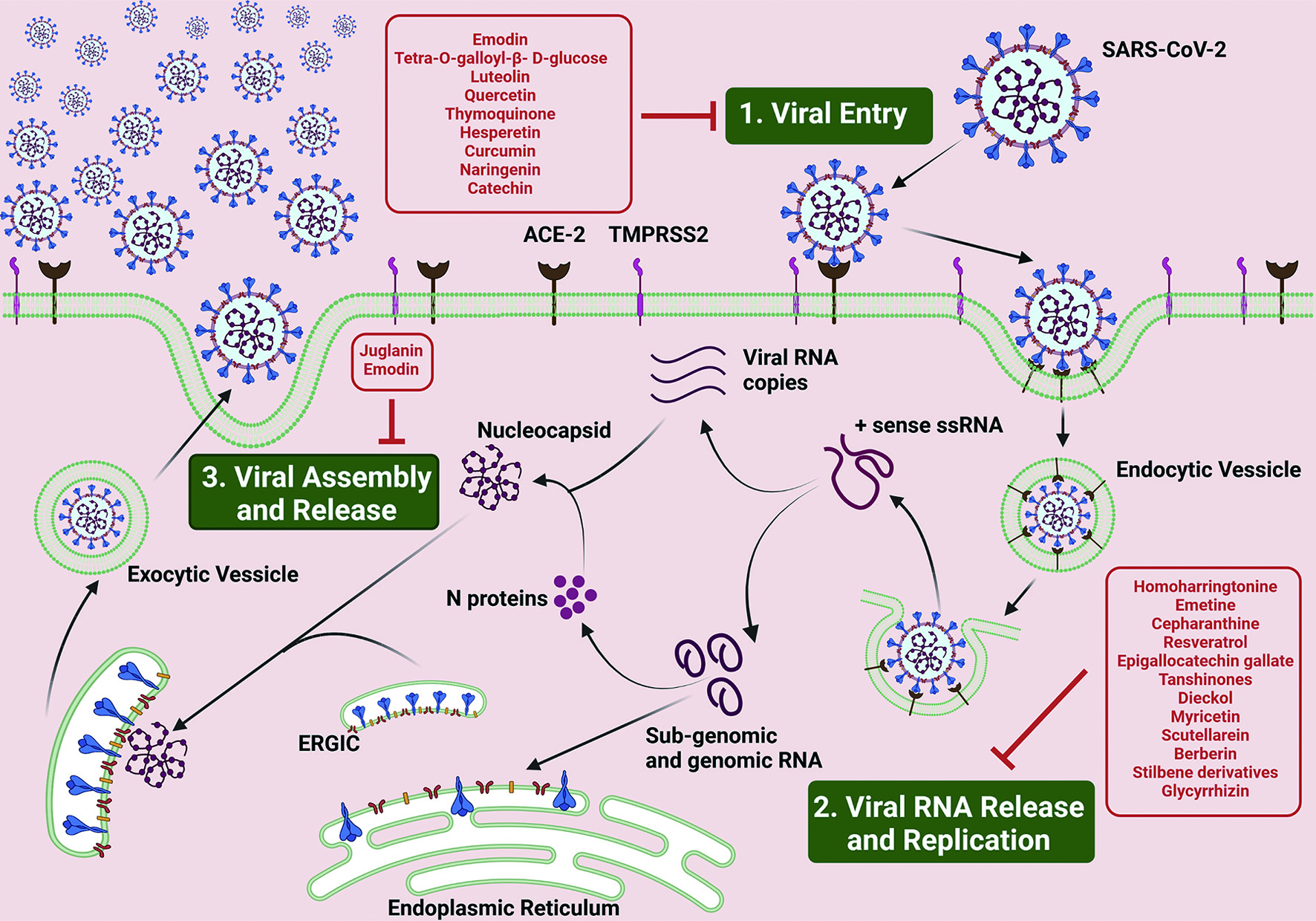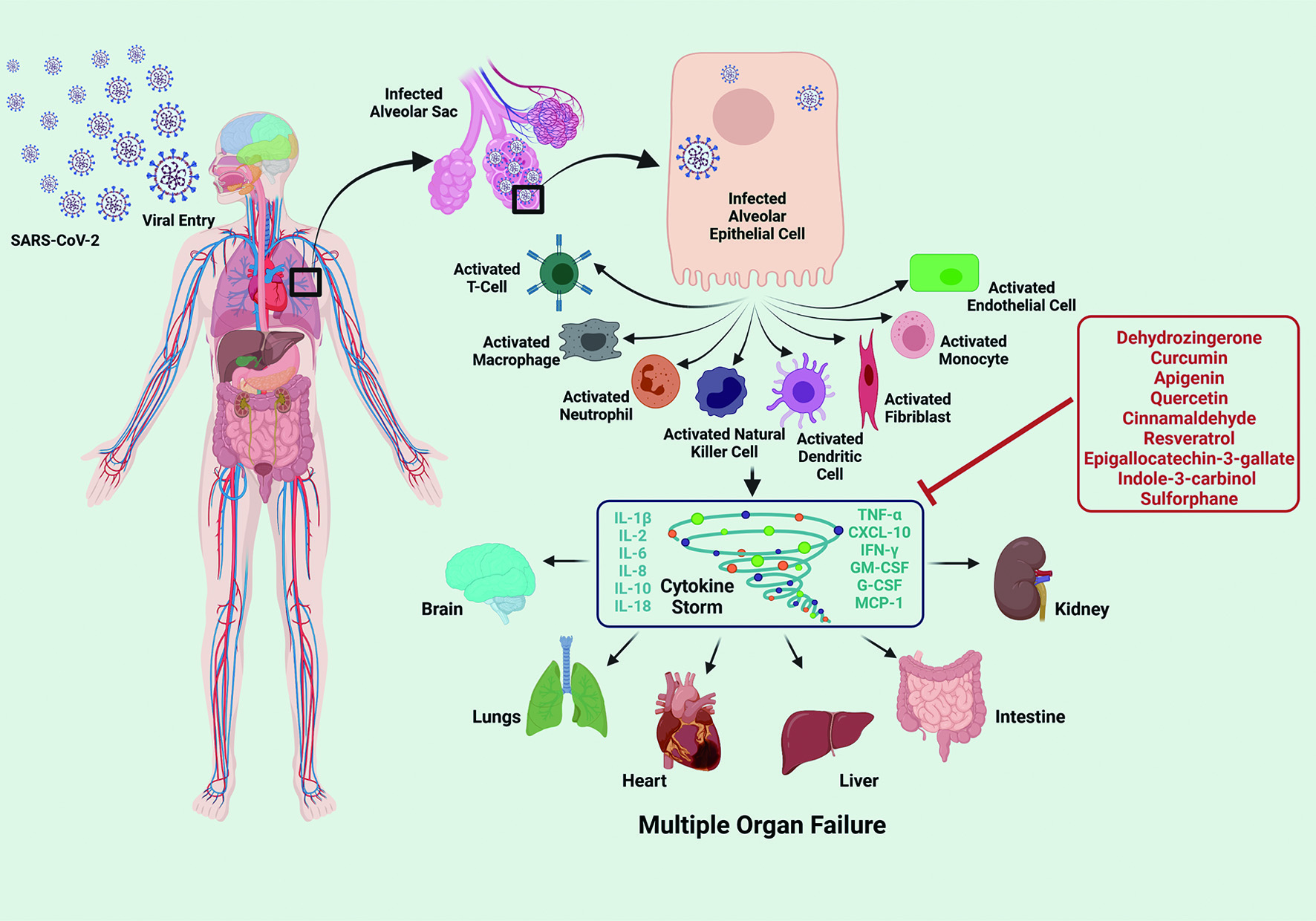
Figure 1. Structure of SARS-CoV-2 Virus. SARS-CoV-2 virus contains a single stranded RNA serves as the genetic material to which ribonucleoproteins that assist in viral structure and replication.are bound. The encapsulating viral envelope is comprised of a lipid layer interspersed with membrane and envelope proteins as well as characteristic receptor-interacting spike glycoprotein.

Figure 2. Potential Lead Phytochemicals that can target SARS-CoV-2. Several phytochemicals have been identified to have the potential to disrupt different stages of viral lifecycle or pathological host response following infection. The structures of candidate phytochemicals that have potential to serve as the lead compounds for drug discovery are presented as follows: (a) Phytochemicals targeting viral entry into the host cell; (b) Phytochemicals targeting viral replication; (c) Phytochemicals inhibiting viral release from the host cell; and (d) Phytochemicals that can attenuate host CRS or cytokine storm (See Text for Details).

Figure 3. Lead Phytochemicals that can target SARS-CoV-2 Life Cycle. SARS-CoV-2 life cycle in human host is broadly divided in to three steps, namely, 1. Viral Entry; 2. Viral RNA Release and Replication; and 3. Viral Assembly and Release (see text for details). Briefly, SARS-CoV-2 viruses attach to the ACE-2 receptor on the plasma membrane of the host cell via the interaction of S, Spike glycoprotein. This interaction triggers the activity of TMPRSS2 receptors present on the plasma membrane, initiating the endocytosis of the viral particles. Upon entry, the viral particle encapsulated in the plasma membrane structure, the endocytic vesicle, opens up to release the viral RNA into the host cell cytoplasm. The ss RNA undergoes replication to produce numerous RNA viral RNA replicates as well as genomic and sub-genomic RNA, the former which fuses with N proteins to form the nucleocapsid structure and the latter which translates into the S, M and E envelope proteins and the accessory proteins. The membrane proteins incorporates into the endoplasmic reticular membrane which releases off into the cytoplasm and encloses the nucleocapsid structures to form exocytic vesicle, which then fuses with the host cell plasma membrane and releases the viruses into the extracellular space. Phytochemicals with the potential to disrupt different stages of the viral infection cycle are boxed and listed in red.

Figure 4. Lead Phytochemicals that can Targeting Pathological Host Response. Upon the entry into the human body, SARS-CoV-2 replicates within the human host cells, especially within the alveolar epithelial cells, as the route of entry is via the respiratory tract. Further, it triggers the immune response via activating the immune cells such as T-cell, alveolar macrophages, neutrophils, natural killer cells, dendritic cells, fibroblasts. monocytes and endothelial cells. These activated immune cells potentiates a cascade of signaling events inducing the release of varied cytokines such as IL-1β/2/6/8/10/18, TNF-α, IFN-γ, G-CSF, GM-CSF, CXCL-10 and MCP-1, producing CRS and cytokine storm, which can lead to multiple organ failure, affecting the major human organs including brain, lungs, liver, heart, intestine and kidney. Phytochemicals that have therapeutic or preventive potential to target pathological CRS and/or cytokine storm are boxed and listed in red.



